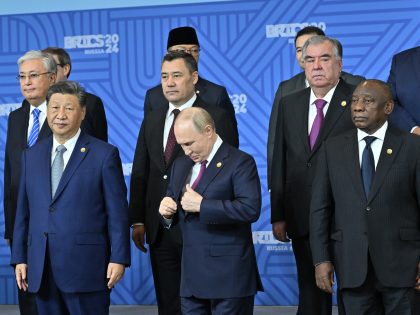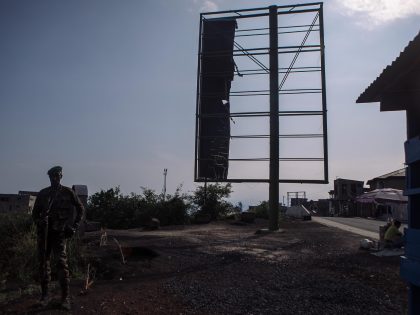Is Africa really rising? No.
The rhetoric around “Africa rising” is giving us a false sense of comfort and distracting us from the real work that needs to happen.

Zambia, Barotse Floodplain, November 2012. (Felix Clay via WorldFish Flickr CC).
In the year 2000, the Economist ran a cover story with the title “Hopeless Africa”. Four years later, Robert Guest, who served as the newspaper’s Africa Editor, published “The Shackled Continent”, a book that pretty much concluded that, absent any miracles, Africa’s future was bleak. The book was widely praised, not least of all by all-round Africa expert Bob Geldof who said “[it] was written with a passion for Africa and Africans”. Then in 2011, the current era of Afro-euphoria signalled its triumphant entrance with the Economist’s Africa Rising cover story. In contrast to their cover story of just a couple of years back, this one declared that there was hope for the hopeless continent (TIME did exactly the same thing in 2012).
We’ve written about the Africa Rising meme on this site, from culture to politics to music to fashion, again and again and again and again and again and again and again and again. Now for the economics.
To be sure, African economies have begun growing again after contracting for most of the 1980s and 1990s. According to the World Bank, real GDP per capita shrank at a rate of 1% per year over the period 1980 to 2000 for sub-Saharan Africa as a whole. Since 2000, real GDP per capita has grown at the more respectable rate of 2% per year. And it appears that the incidence of poverty, at least as measured by the World Bank, also declined, although marginally, during the last decade.
Many so-called Africa watchers seem to have caught the “Africa rising” bug. There is now wide expectation, undergirded of course by the likes of the Economist, that growth will continue unabated going forward. Africa’s time is now! So declared a piece in the trendy Harvard Business Review.
The “Africa rising” narrative suggests the continent is now well on its way to self-sustaining growth. The kind of growth that the East Asian “tigers” and the countries known as the West experienced during the times they were rising. The kind of growth that has led to a massive reduction in poverty in China within a generation. Unfortunately here is where reality stands at odds with the euphoria.
Africa’s current growth revival (the continent did grow, and healthily so, from the 1960s to the 1970s) seems to be largely driven by external factors: China’s spectacular growth and along with it an increase in the price of commodities, whose exports Africa relies on to a great extent. So any slowdown in China’s growth, as is likely to happen as its economy matures, is likely to impact greatly on Africa’s performance.
To be sure, there have also been some internal drivers of growth: price distortions have been reduced in agriculture, macroeconomic stability has been restored (inflation rates are low and stable across most of the continent) and political institutions have improved (democracy and elections are now more common on the continent than before). But the prospects of these internal policies to sustain long-run growth are dismal. The Harvard economist Dani Rodrik, in a highly insightful essay titled “An African Growth Miracle?”, points out that the relationship between standard measures of good policies (macroeconomic stability, reduced price distortions, etc…) and economic growth tends to be weak. At best, good policies make economic crises less prevalent but cannot sustain and drive growth on their own. The same is also true of institutions which, following the much publicized work of Daron Acemoglu and friends, have become the be all and end all of development thinking. Rodrik points out that Latin America has experienced positive institutional changes within the last 20 years with a small payoff in growth. On the other hand, impressive growth in South Korea (until the 1990s) and China (today) has occurred alongside rampant cronyism and corruption.
According to Rodrik, self-sustaining growth begins to occur when an economy undergoes a structural transformation from relying less on agriculture to relying more on industry. That is, self-sustaining growth is underpinned by large-scale industrialization. This is the historical lesson of the East Asian tigers, of China, and of even the West. Unfortunately the facts for Africa point in the opposite direction. Yes, African labour has moved out of agriculture in large numbers, but the beneficiary has not been manufacturing but services. The service sector tends not to be as “productive” as the manufacturing sector. And productivity, which is the ability to produce ever more output from the same amount of inputs, is what drives and sustains growth. The share of manufacturing in the economies of most African countries has declined from about 15% in the 1970s to around 10% today. That is Africa has in fact deindustrialized! And even the 10% of GDP that is manufacturing is mostly made up of small informal firms that are not particularly productive and are unlikely to evolve into big formal firms. Rodrik sums up his prospects for Africa thus:
To sum up, the African pattern of structural change is very different from the classic pattern that has produced high growth in Asia, and before that, the European industrializers. Labour is moving out of agriculture and rural areas. But formal manufacturing industries are not the main beneficiary. Urban migrants are being absorbed largely into services that are not particularly productive and into informal activities. The pace of industrialization is much too slow to [spurn self-sustaining growth].
So what can be done? Rodrik suggests that industrialization can be helped along by improving the “business climate” in Africa. But the problem with the business climate argument, apart from being vague, is that it does not confront the fact that Africa was more industrialized in the 1970s, at a time when the business climate was likely no different from what it is today. In my opinion, the Structural Adjustment Policies (SAPs) that were administered beginning in the early 1980s are largely responsible for halting the pace of industrialization on the continent. With SAPs, Africans were told by their betters to stop supporting industry because doing so was “wasteful”. Subsidies to industry were reduced. Protective trade barriers were removed. Planning for industry was done away with. All this advice was dispensed in spite of the fact that today’s developed countries industrialized behind a veil of considerable state support. For instance, the historian Sven Beckert points out that Britain’s cloth manufacturing industry, which was largely responsible for the Industrial Revolution, was shielded from competition from India for most of the 18th Century. The Cambridge economist Ha-Joon Chang has called this phenomenon of rich countries forcing policies on poor countries that they themselves did not implement during their time of take-off as “kicking away the ladder”.
Africa needs to industrialize for it to really rise. Unfortunately the rhetoric around “Africa rising” is giving us a false sense of comfort and distracting us from the real work that needs to happen.



















